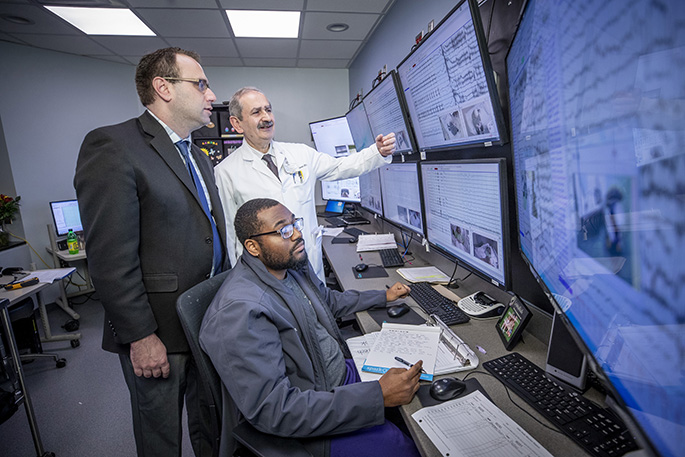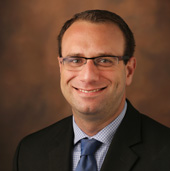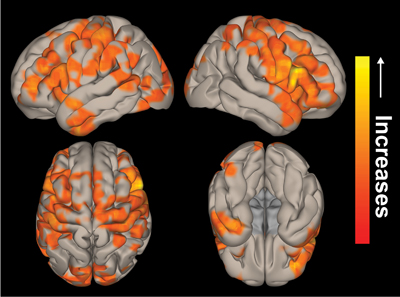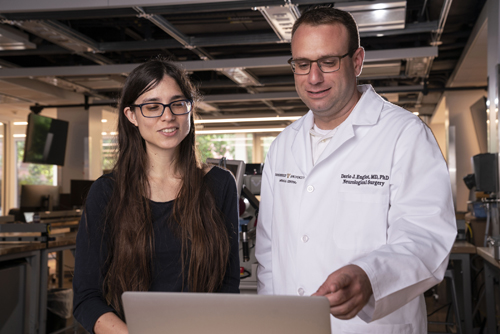
New epilepsy monitoring systems at Vanderbilt University Medical Center are providing neurologists better data for assessing adult and pediatric patients.
The systems installed at Vanderbilt University Adult Hospital (VUAH) and Monroe Carell Jr. Children’s Hospital at Vanderbilt are a $1 million investment. Within the two epilepsy monitoring units, epileptologists — neurologists who specialize in epilepsy — track electroencephalography (EEG) data of brain electrical activity together with high-resolution video to identify seizure activity and pinpoint the origins of seizures.
“This new equipment will allow us to study more complex patients using many more electrodes and will advance epilepsy surgery at Vanderbilt in the process,” said Bassel Abou-Khalil, MD, founder and director of the Vanderbilt Epilepsy Monitoring Unit and Clinical Epilepsy Program. “We’re excited about a couple of features. First, the video resolution will allow us to study signs that we were not able to see previously. Also, the increased number of channels will allow us to do more extensive studies that were not possible before.”
VUMC has the only Level 4 center for adults and one of only two Level 4 centers for children in Tennessee as designated by the National Association of Epilepsy Centers. The monitoring unit at VUAH has eight beds, while the one at Children’s Hospital has four beds.
“Patients are admitted to the hospitals for EEG and video monitoring, so we can determine where the seizures are coming from and can plan a surgery to try to stop those seizures,” said Dario Englot, MD, PhD, neurosurgical director of Epilepsy. “The quality of the data we get from that monitoring is very much limited by the quality of that equipment. The previous system we had was over 10 years old.”
The video monitoring is better on the new systems with two high resolution cameras focused on each patient bed. The EEG monitoring is sensitive to high frequency rhythms, which Englot said is a big improvement.
“The quality of the old data was limited, and the speed at which we could collect the data with the previous system prevented us from doing analysis of high frequency rhythms,” Englot said. “High frequency rhythms, we are now learning, can be very important to helping us determine where seizures are coming from.”
Teams of clinicians at both hospitals monitor patients constantly.
“This new equipment will give the staff, providers and researchers the ability to review and study EEG data in a much more user-friendly and flexible system,” said William Levis, neurodiagnostic lab manager. “The technical capabilities far outpace the legacy system we were using.“















